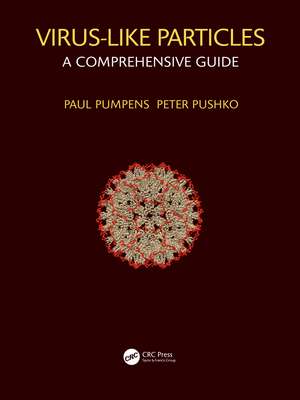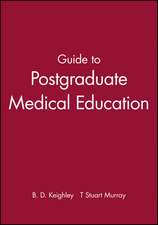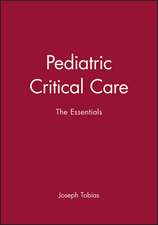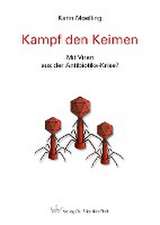Virus-Like Particles: A Comprehensive Guide
Autor Paul Pumpens, Peter Pushkoen Limba Engleză Paperback – 27 mai 2024
Key Features
- Presents the first full guide to the VLP nanotechnology, classified by current viral taxonomy
- Outlines specific structural properties and interconnection of the virions and VLPs
- Explains generation and characteristics of VLPs produced by various expression systems
- Offers up-to-date summary of VLPs designed as vaccines and delivery tools
- Unveils interconnection of VLPs with novel organic and inorganic nanomaterials
| Toate formatele și edițiile | Preț | Express |
|---|---|---|
| Paperback (1) | 622.88 lei 6-8 săpt. | |
| CRC Press – 27 mai 2024 | 622.88 lei 6-8 săpt. | |
| Hardback (1) | 1233.79 lei 6-8 săpt. | |
| CRC Press – 23 mai 2022 | 1233.79 lei 6-8 săpt. |
Preț: 622.88 lei
Preț vechi: 732.80 lei
-15% Nou
Puncte Express: 934
Preț estimativ în valută:
119.18€ • 125.11$ • 98.93£
119.18€ • 125.11$ • 98.93£
Carte tipărită la comandă
Livrare economică 10-24 aprilie
Preluare comenzi: 021 569.72.76
Specificații
ISBN-13: 9781032246734
ISBN-10: 1032246731
Pagini: 674
Ilustrații: 450
Dimensiuni: 210 x 280 mm
Greutate: 1.5 kg
Ediția:1
Editura: CRC Press
Colecția CRC Press
Locul publicării:Boca Raton, United States
ISBN-10: 1032246731
Pagini: 674
Ilustrații: 450
Dimensiuni: 210 x 280 mm
Greutate: 1.5 kg
Ediția:1
Editura: CRC Press
Colecția CRC Press
Locul publicării:Boca Raton, United States
Public țintă
Postgraduate and ProfessionalCuprins
Section I. Double-stranded DNA viruses. Chapter 1. Order Caudovirales. Chapter 2. Order Herpesvirales. Chapter 3. Order Asfuvirales. Chapter 4. Order Rowavirales. Chapter 5. Other double-stranded DNA viruses. Chapter 6. Order Lefavirales. Chapter 7. Order Zurhausenvirales. Chapter 8. Order Sepolyvirales. Section II. Single-stranded DNA viruses. Chapter 9. Order Piccovirales. Chapter 10. Order Cirlivirales. Chapter 11. Order Tubulavirales. Chapter 12. Other single-stranded DNA viruses. Section III. Double-stranded RNA viruses. Chapter 13. Order Reovirales. Chapter 14. Family Birnaviridae. Chapter 15. Other double-stranded RNA viruses. Section IV. Positive single-stranded RNA viruses. Chapter 16. Order Hepelivirales. Chapter 17. Order Martellivirales: Bromoviridae. Chapter 18. Order Martellivirales: Togaviridae. Chapter 19. Order Martellivirales: Virgaviridae. Chapter 20. Order Martellivirales: Other Families. Chapter 21. Order Tymovirales. Chapter 22. Order Amarillovirales. Chapter 23. Order Nodamuvirales. Chapter 24. Order Tolivirales. Chapter 25. Orders Norzivirales and Timlovirales. Chapter 26. Order Nidovirales. Chapter 27. Order Picornavirales. Chapter 28. Order Sobelivirales. Chapter 29. Order Patatavirales. Chapter 30. Other positive single-stranded RNA viruses. Section V. Negative single-stranded RNA viruses. Chapter 31. Order Mononegavirales. Chapter 32. Order Bunyavirales. Chapter 33. Order Articulavirales. Chapter 34. Other negative single-stranded RNA viruses. Section VI. Single-stranded RNA viruses using reverse transcription. Chapter 35. Order Ortervirales. Section VII. Double-stranded DNA viruses using reverse transcription. Chapter 36. Family Caulimoviridae. Chapter 37. Order Blubervirales: Surface Protein. Chapter 38. Order Blubervirales: Core Protein.
Notă biografică
Paul Pumpens, PhD, graduated from the Chemical Department of the University of Latvia in 1970 and earned his PhD in molecular biology from the Latvian Academy of Sciences, Riga and DSc from the Institute of Molecular Biology of the USSR Academy of Sciences, Moscow, USSR. Dr. Pumpens started his research career as a research fellow at the Institute of Organic Synthesis, where he conducted research from 1973 to 1989. He served as head of the Laboratory of Protein Engineering at the Institute of Organic Synthesis (1989-1990), as head of the Department of Protein Engineering at the Institute of Molecular Biology of the Latvian Academy of Sciences (since 1993, the Biomedical Research and Study Centre) in Riga (1990-2002), and as scientific director of the Biomedical Research and Study Centre (2002-2014). He served as a professor of the Biological Department of the University of Latvia from 1999 until 2013. Dr. Pumpens pioneered genetic engineering research in Latvia. He was one of the first in the world to perform successful cloning of the hepatitis B virus genome and the expression of hepatitis B virus genes in bacterial cells. His major scientific interests are in designing novel recombinant vaccines and diagnostic reagents and development of tools for gene therapy based on virus-like particles. Dr. Pumpens is an author of more than 300 scientific papers and issues or pending patents. He has edited, together with Dr. Yury E. Khudyakov, the Taylor & Francis book Viral Nanotechnology (2015) and authored the Taylor & Francis book Single-stranded RNA phages: From molecular biology to nanotechnology (2020).
Dr. Peter Pushko graduated in 1984 from the University of Latvia, Riga, USSR and received his doctorate degree in Molecular Biology in 1990 from the University of Tartu (Tartu, Estonia) under mentorship of Dr. Paul Pumpens. He worked at the Institute of Molecular Biology (Riga, Latvia) on chimeric virus-like particles derived from bacteriophage fr and from hepatitis B virus. He completed postdoctoral studies at the Institute of Virology (Berlin, Germany), State Bacteriological Laboratory (Stockholm, Sweden) and Imperial Cancer Research Fund (Department of Pathology, University of Cambridge, U.K.) From 1994 to 2000, Dr. Pushko worked at the U.S. Army Medical Research Institute for Infectious Diseases (USAMRIID, Fort Detrick, Maryland, USA) as the National Research Council fellow. During this period, he developed RNA vector system from Venezuelan equine encephalitis (VEE) virus replicon and prepared experimental vaccines against Ebola, Marburg, and Lassa hemorrhagic fever viruses. In 2000-2010, Dr. Pushko worked at Novavax, Inc., (Rockville, MD), where he developed recombinant virus-like particles (VLPs) as vaccines against influenza. Since 2010, Dr. Pushko serves as the President and Chief Scientific Officer at Medigen Inc. (Frederick, Maryland), a biopharmaceutical company developing innovative vaccines for emerging infectious diseases and cancer. His scientific interests include vaccine development for emerging viruses, such as pandemic influenza, alpha-, arena-, and flaviviruses. He developed several novel vaccine technologies including VEE replicon vector, influenza VLPs, and DNA-launched live-attenuated vaccines. Dr. Pushko is the author of over 50 patents and 70 publications.
Dr. Peter Pushko graduated in 1984 from the University of Latvia, Riga, USSR and received his doctorate degree in Molecular Biology in 1990 from the University of Tartu (Tartu, Estonia) under mentorship of Dr. Paul Pumpens. He worked at the Institute of Molecular Biology (Riga, Latvia) on chimeric virus-like particles derived from bacteriophage fr and from hepatitis B virus. He completed postdoctoral studies at the Institute of Virology (Berlin, Germany), State Bacteriological Laboratory (Stockholm, Sweden) and Imperial Cancer Research Fund (Department of Pathology, University of Cambridge, U.K.) From 1994 to 2000, Dr. Pushko worked at the U.S. Army Medical Research Institute for Infectious Diseases (USAMRIID, Fort Detrick, Maryland, USA) as the National Research Council fellow. During this period, he developed RNA vector system from Venezuelan equine encephalitis (VEE) virus replicon and prepared experimental vaccines against Ebola, Marburg, and Lassa hemorrhagic fever viruses. In 2000-2010, Dr. Pushko worked at Novavax, Inc., (Rockville, MD), where he developed recombinant virus-like particles (VLPs) as vaccines against influenza. Since 2010, Dr. Pushko serves as the President and Chief Scientific Officer at Medigen Inc. (Frederick, Maryland), a biopharmaceutical company developing innovative vaccines for emerging infectious diseases and cancer. His scientific interests include vaccine development for emerging viruses, such as pandemic influenza, alpha-, arena-, and flaviviruses. He developed several novel vaccine technologies including VEE replicon vector, influenza VLPs, and DNA-launched live-attenuated vaccines. Dr. Pushko is the author of over 50 patents and 70 publications.
Recenzii
"This book is indeed the first complete and comprehensive systematic guide to virus-like particles. Although there are some comparable titles available, this book is quite unique as the first to cover the application of VLPs as vaccines, nanomaterials, and therapeutic tools." - Omer Iqbal MD, Loyola University Medical Center
"[This books] opens a new sight on the cosmos harboring all known viruses including both the naturally evolved viruses and the creations of molecular biologists … even the table of contents and the preface are a special experience. The ToC is a highly condensed, but comprehensive course in current virus taxonomy. The preface gives a new look on the history of molecular virology ... A special feature of this top-level scientific book are the short citations from the world of literature and philosophy at the beginning of each chapter. [I] recommend the book for all people who are interested in viruses and the VLPs derived from them." - Professor Wolfram Gerlich
"Virus-Like Particles: A Comprehensive Guide is an extraordinary scientific exploration co-authored by the brilliant minds of Paul Pumpens and Peter Pushko. This magnum opus delves into the captivating realm of virus-like particles (VLPs) with a level of depth and clarity that leaves no stone unturned. [The authors] … are seasoned experts who possess an unparalleled mastery of their subject matter. With meticulous attention to detail and an engaging prose style, they guide readers through the intricate world of VLPs, shedding light on their structure, function, and potential applications. The book's layout is a work of art in itself. Richly illustrated diagrams, electron micrographs, and vibrant visuals bring the concepts to life, ensuring that complex ideas are conveyed with remarkable clarity. Virus-Like Particles: A Comprehensive Guide is an intellectual tour de force that will undoubtedly shape the landscape of VLP research for years to come. Whether you're a scientist, student, or simply a curious mind seeking to explore the wonders of the microscopic world, this book will leave you captivated, enlightened, and inspired." - Rupsa Basu
"The introduction of nanotechnologies into the biological sciences is accompanied by an avalanche-like accumulation of new knowledge, the comprehension of which in itself is an independent task. The very timely appearance of the book “Virus-like particles. A comprehensive guide” by P. Pumpens and P. Pushko solves this problem. The book summarizes, analyzes, and organizes the latest scientific data that have appeared over the past 40 years… Of particular interest and respect are the authors' excursions into world of literature, demonstrating not only their amazing erudition, but also the global unity of the philosophical approach to various aspects of life spheres. Without a doubt, the book by P. Pumpens and P. Pushko will turn out to be and will remain for a long time a real guide for specialists working in the field of virology, genetic engineering, and nanotechnology." - Tamara P. Pererva
"The mysteries of [the world of viruses] are explicitly represented in this book. The text is written professionally, intelligibly, and fascinatingly. Epigraphs from the works of great writers and thinkers precede all sections and cause unexpected allusions. The book is brilliantly illustrated, revealing the architectural perfection of virus-like particles' 3D structure. The vast material is strictly organized based on the classical Baltimore classification complemented with the current official taxonomy developed by the International Committee on Taxonomy of Viruses (ICTV). The authors retell the history of viruses’ discovery, the progress in elucidating their molecular and tridimensional structure, and the successes of their usage for the benefit of humanity." - Professor Maria Obolenskaya
"I cannot teach anybody anything. I can only make them think '' - these words of the great ancient Greek philosopher Socrates may be the best epigraph to the book «Virus-like Particles» by Paul Pumpens and Peter Pushko. The authors made the first attempt to write the complete systematic guide for the classification of various virus-like particles (VLPs) by using modern taxonomic categories… In addition to viral taxonomy the authors paid a lot of attention to the practical applications of various VLPs…" - Larisa Moisa
[The structure of the book] is well thought out. Each section corresponding to the specific group of VLPs is preceded by the general information on the structure and replication of the corresponding group of viruses… It is very instructive to juxtapose the novel classification of viruses with Baltimore's one… The advantages of the book are countless: the marvelous illustrations, the internal structure of presentation, the novelty of the data, the comprehensive reference list. It will just suffice to mention the keen epigraphs.
Michael Zavelevich
"[This books] opens a new sight on the cosmos harboring all known viruses including both the naturally evolved viruses and the creations of molecular biologists … even the table of contents and the preface are a special experience. The ToC is a highly condensed, but comprehensive course in current virus taxonomy. The preface gives a new look on the history of molecular virology ... A special feature of this top-level scientific book are the short citations from the world of literature and philosophy at the beginning of each chapter. [I] recommend the book for all people who are interested in viruses and the VLPs derived from them." - Professor Wolfram Gerlich
"Virus-Like Particles: A Comprehensive Guide is an extraordinary scientific exploration co-authored by the brilliant minds of Paul Pumpens and Peter Pushko. This magnum opus delves into the captivating realm of virus-like particles (VLPs) with a level of depth and clarity that leaves no stone unturned. [The authors] … are seasoned experts who possess an unparalleled mastery of their subject matter. With meticulous attention to detail and an engaging prose style, they guide readers through the intricate world of VLPs, shedding light on their structure, function, and potential applications. The book's layout is a work of art in itself. Richly illustrated diagrams, electron micrographs, and vibrant visuals bring the concepts to life, ensuring that complex ideas are conveyed with remarkable clarity. Virus-Like Particles: A Comprehensive Guide is an intellectual tour de force that will undoubtedly shape the landscape of VLP research for years to come. Whether you're a scientist, student, or simply a curious mind seeking to explore the wonders of the microscopic world, this book will leave you captivated, enlightened, and inspired." - Rupsa Basu
"The introduction of nanotechnologies into the biological sciences is accompanied by an avalanche-like accumulation of new knowledge, the comprehension of which in itself is an independent task. The very timely appearance of the book “Virus-like particles. A comprehensive guide” by P. Pumpens and P. Pushko solves this problem. The book summarizes, analyzes, and organizes the latest scientific data that have appeared over the past 40 years… Of particular interest and respect are the authors' excursions into world of literature, demonstrating not only their amazing erudition, but also the global unity of the philosophical approach to various aspects of life spheres. Without a doubt, the book by P. Pumpens and P. Pushko will turn out to be and will remain for a long time a real guide for specialists working in the field of virology, genetic engineering, and nanotechnology." - Tamara P. Pererva
"The mysteries of [the world of viruses] are explicitly represented in this book. The text is written professionally, intelligibly, and fascinatingly. Epigraphs from the works of great writers and thinkers precede all sections and cause unexpected allusions. The book is brilliantly illustrated, revealing the architectural perfection of virus-like particles' 3D structure. The vast material is strictly organized based on the classical Baltimore classification complemented with the current official taxonomy developed by the International Committee on Taxonomy of Viruses (ICTV). The authors retell the history of viruses’ discovery, the progress in elucidating their molecular and tridimensional structure, and the successes of their usage for the benefit of humanity." - Professor Maria Obolenskaya
"I cannot teach anybody anything. I can only make them think '' - these words of the great ancient Greek philosopher Socrates may be the best epigraph to the book «Virus-like Particles» by Paul Pumpens and Peter Pushko. The authors made the first attempt to write the complete systematic guide for the classification of various virus-like particles (VLPs) by using modern taxonomic categories… In addition to viral taxonomy the authors paid a lot of attention to the practical applications of various VLPs…" - Larisa Moisa
[The structure of the book] is well thought out. Each section corresponding to the specific group of VLPs is preceded by the general information on the structure and replication of the corresponding group of viruses… It is very instructive to juxtapose the novel classification of viruses with Baltimore's one… The advantages of the book are countless: the marvelous illustrations, the internal structure of presentation, the novelty of the data, the comprehensive reference list. It will just suffice to mention the keen epigraphs.
Michael Zavelevich
Descriere
This book represents the first complete and systematic guide to the virus-like particles (VLPs) and their applications as vaccines, therapeutic tools, nanomaterials, and nanodevices. The 3D structures, expression systems, and nanotechnological applications uncover their evolving potential as novel vaccines and medical interventions.























